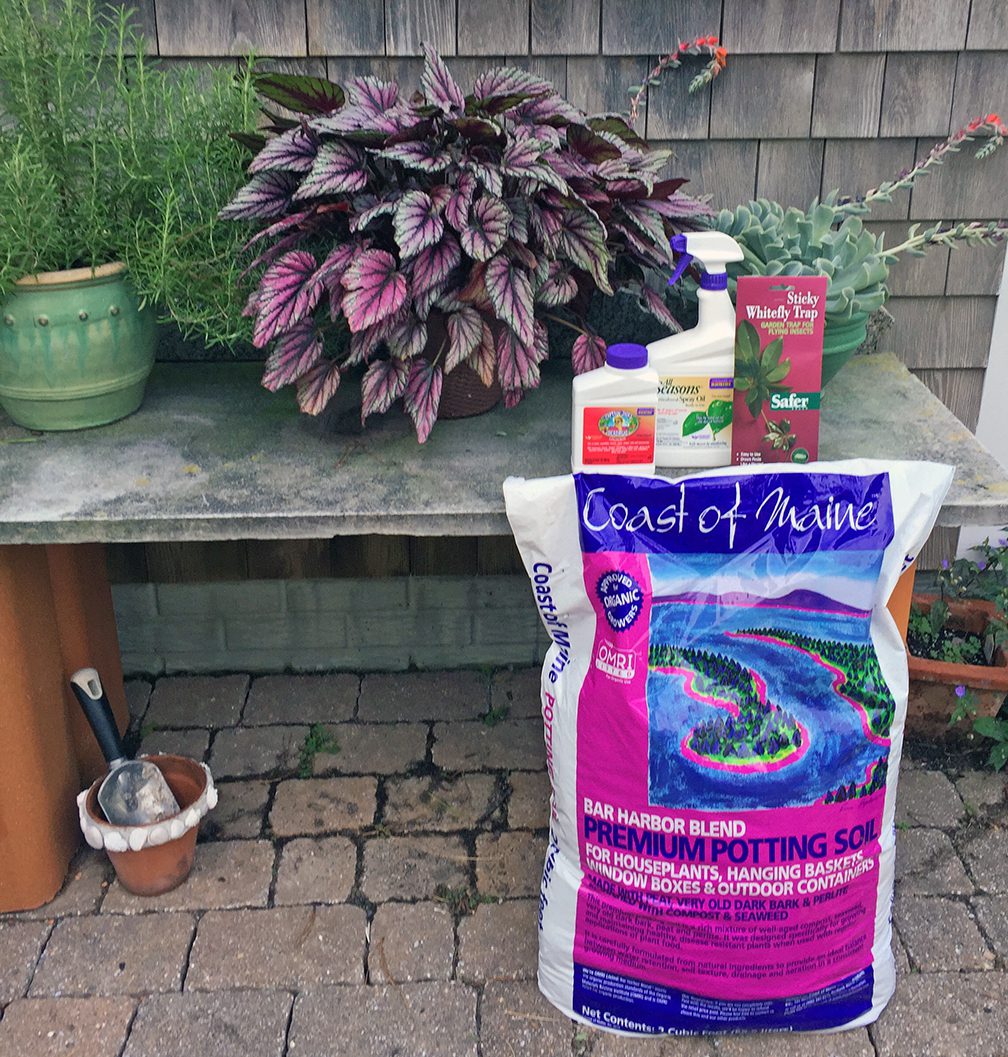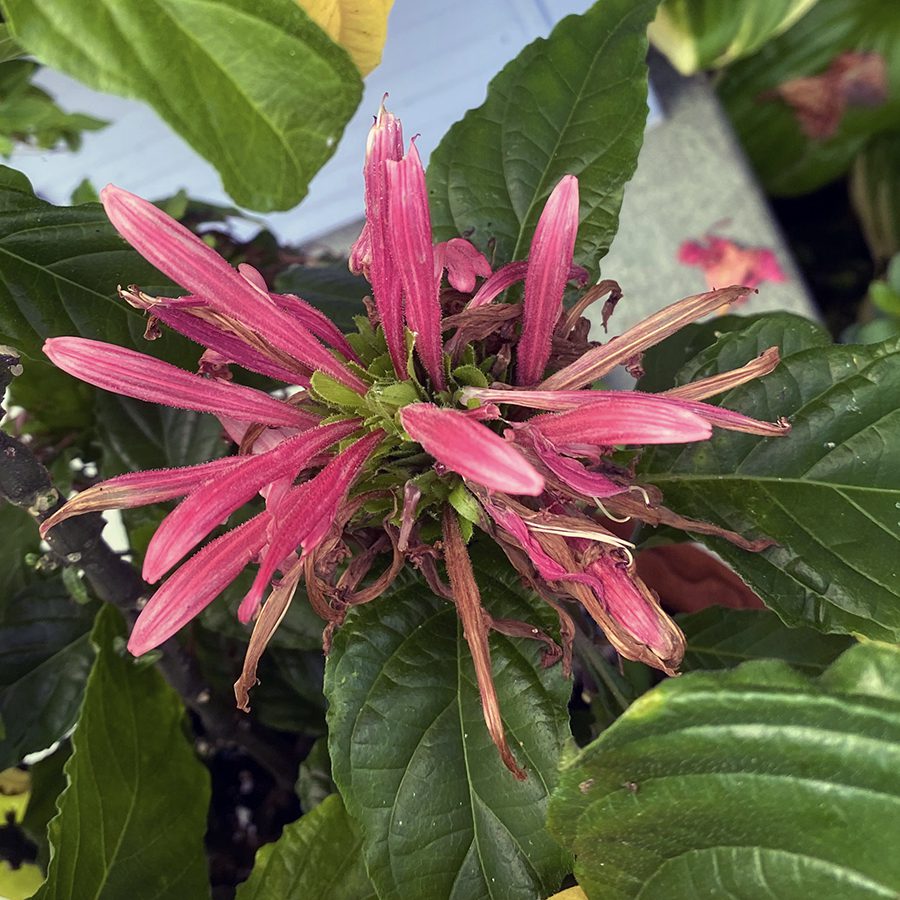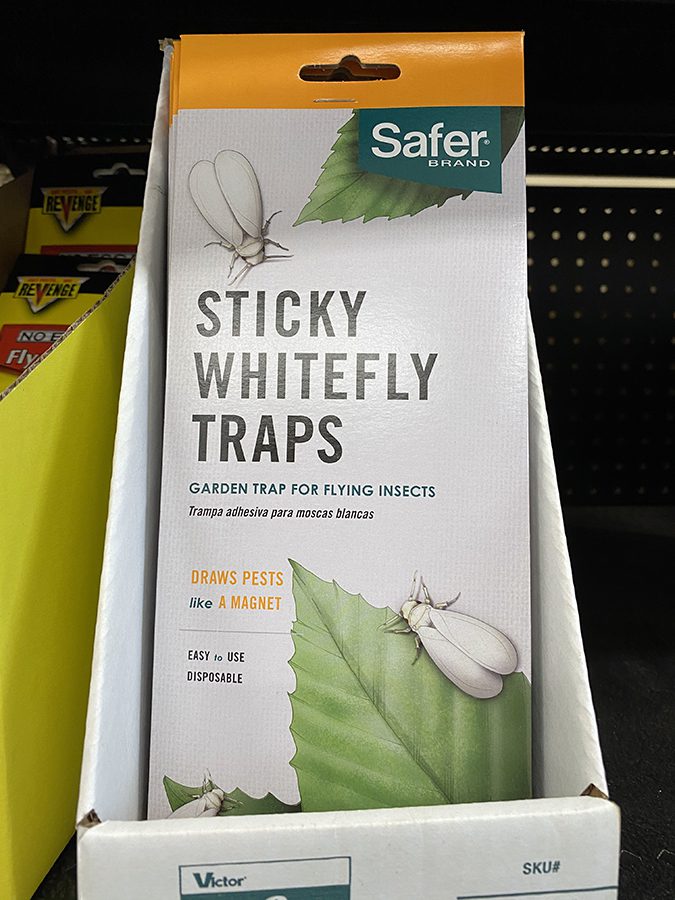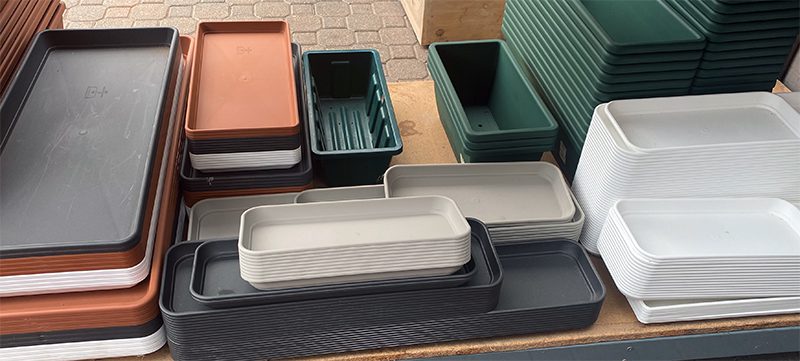Bringing Plants Indoors In The Fall
Bringing Plants Indoors In The Fall
I don’t know about you, but I’m about to start bringing many plants back indoors. Some of these are houseplants that were sent to “summer camp” in shady areas, and others are tender annuals or perennials that I love to save from year to year. I have begonias, succulents, geraniums and philodendrons ready to come back indoors in the next two or three weeks.
The general rule of thumb is that we want to bring in houseplants and tender flowering varieties into the house once the nighttime temperatures start to fall below 50 degrees most nights. In this area, the days are often still quite warm and we don’t need to have the heat on in our houses yet. So this timing means that the plants have a chance to adjust to the indoors before they have to also get used to central heating.


But for most of us, it’s not just a simple matter of carrying the pots back inside. We need to be prepared. Here are a few of the things you’ll need at the ready when your plants come back indoors.
1. Saucers and trays. Make sure you have plastic saucers that are wider than the bottom of your pots by at least an inch or two. This will allow you to water your plants well and not worry that the saucer will overflow.
2. Potting soil. Some plants should be repotted when you can do this outdoors…less mess in the house! So any plant that seems root-bound should get a new pot before it comes back inside.
3. Horticultural Oil or Insecticidal Soap. Spray any plant that had scale, mealy bug or aphids last year when it was inside. Do this before it comes back indoors again since it’s easier to coat the plant well outside and let the drips fall on the patio or lawn.
4. Captain Jack’s Dead Bug Brew…aka spinosad. I add this to the watering can for the week before and three to four weeks after bringing plants inside. When added to the water the spinosad coats the roots and kills fungus gnat larvae that feed there.
5. Whitefly Traps. These yellow sticky cards function in a couple of ways. They trap any fungus gnats (aka fruit flies) that might travel in with the plants, and they also attract other insects such as whitefly. This not only kills many pests, it alerts you if there is a significant bug problem you should be paying attention to.
6. Rooting Powder or Hormone. There are many plants that are either getting too large to bring in, or that I know are best saved by taking cuttings. I have several geraniums and plectranthus, for example, that are now in large containers and window boxes too big to drag inside. These plants can easily be saved by taking cuttings. I use rooting hormone to coat the bottom of the stems and place them in plastic pots filled with fresh potting soil. These are put in a bright spot but out of direct sunlight while they root. Once they perk up and have obviously rooted in (usually three to four weeks) I move them to a sunny window for the winter.

Don’t forget to look pots over well before you bring them in…slugs can hide under rims and in drainage holes, and they can do a lot of munching after they are inside the house! Better not to give them a free pass indoors.

12 Comments
Leave a Comment
Subscribe To Our Newsletter
Sign up for our weekly email about sales and events.

We recently moved to temporary quarter while waiting for our new house to be ready. There were 3 plants I took with me for sentimental reasons (given to me by my son) and I am wondering if I can overwinter them indoors. They are a hellebore (which has gotten quite large), a balloon plant and a lavender plant. Would the hellebore be ok left outside if I wrap it with burlap. This plant would be difficult to repot due to its size. The other 2 plants aren’t as large but could I do the same for them?
I enjoy your newsletter so much – for the humor as well as for the valuable information.
Anita – all of these are outdoor plants and would do better in a very large put outside. You could come into the garden center and ask one of the nursery staff to help you find some large nursery pots you could borrow from us for the winter, and plant them in those with either garden soil or potting soil around them. Having some soil around the roots would be so much better than burlap.
C.L.
WHAT A GREAT ARTICLE … CONCISE AND A GREAT REMINDER THAT WE NEED TO DO MORE THAN JUST BRING THE POTS INSIDE. WE’LL ALSO BE BRINGING LOTS OF UNWANTED CRITTERS WITH THEM. THANK YOU.
Thanks, Barbara! Glad you find it useful.
I would like to know which plants can be brought in and whether they can be treated normally for water and feeding or put in a dark place and watered minimally. My specific interest is in two large hibiscus plants.
Hibiscus should be over-wintered in front of the sunniest window you’ve got. Check for water daily as they dry up quickly indoors. Cut back and begin to fertilize again in February.
CL – I enjoy your blogs. They are always helpful. I have had you to our house once and have attended some of your classes and always learn so much from you.
I have 2 questions: 1. Is a hibiscus a good candidate to be brought inside for the winter. We had our first hibiscus on our patio this year and loved it. We had so many pink blossoms. One day we had 18 of them open at once. So we would love to bring it in but need to know if we should and how to best care for it this winter. 2. We had a small perennial garden this year with a Peony, 2 Becky Dasies, 3 Cone Flowers, 1 Black Eyed Susan, 3 Russian Sage along with 2 Shrub Roses. What do we cut back, how much do we cut them back and when do we do it? Thanks for your help. Look forward to hearing from you.
Thanks, Jackie! To answer your questions: 1. Yes, tropical hibiscus do pretty well inside – put it in front of the sunniest window or slider you have. Be sure not to let them dry up – prune back in Feb and start to fertilize thne. 2. Cut back all your perennials when they brown but NOT the Russian Sage or Rose. Prune rose in spring, by cutting about 1/3 off, Prune Russian Sage in May by cutting down to about 18″ tall.
I have had two spider plants for the last five or so years and over wintered them in my living room and they flourished. Last year, we had gotten kittens and one of them liked to pull the leaves off the plants. The plants moved to another room with the door closed and they barely survived. The plants have been out all summer and are looking fabulous again. My question is what can I do to keep the plants happy indoors without locking them in a separate room to keep the cats away from them?
Susan,
Spider plants like it warm, so maybe in the closed room they were too cool or they didn’t get enough water. If I were you the first thing I’d do is to get some Cat Grass seeds – come on into the store, because we have them in stock. Start some of those in some organic potting soil and a low pot so that your cats have something green that they are allowed to eat. You might also get a tall plant stand so that the spider plant is way above the ground and place it in a window that isn’t near a “launching pad” if you know what I mean. If the spider plants have long stems with “pups” on them, you might clip most or all off when the plant comes in so that there isn’t anything new for the cats to bat at. By the time they grow again hopefully your cats will be so mature, and content with their cat grass, that they’ll leave this plant alone.
Great Blog. Very informative.
Unfortunately, when I print it out for my wife, I get large photo’s and tiny hard-to-read text.
Is there anything you can do at your end to ensure that a readable sized font gets printed out at my end, even if you have to reduce the size of the photos. After all, the information is in the text, and this would be helpful to all.
Thank You,
Jack Ballas
Jack,
All you have to do is highlight the text, copy it, and paste it into a word document. Then you can make the text as large as you want from there.